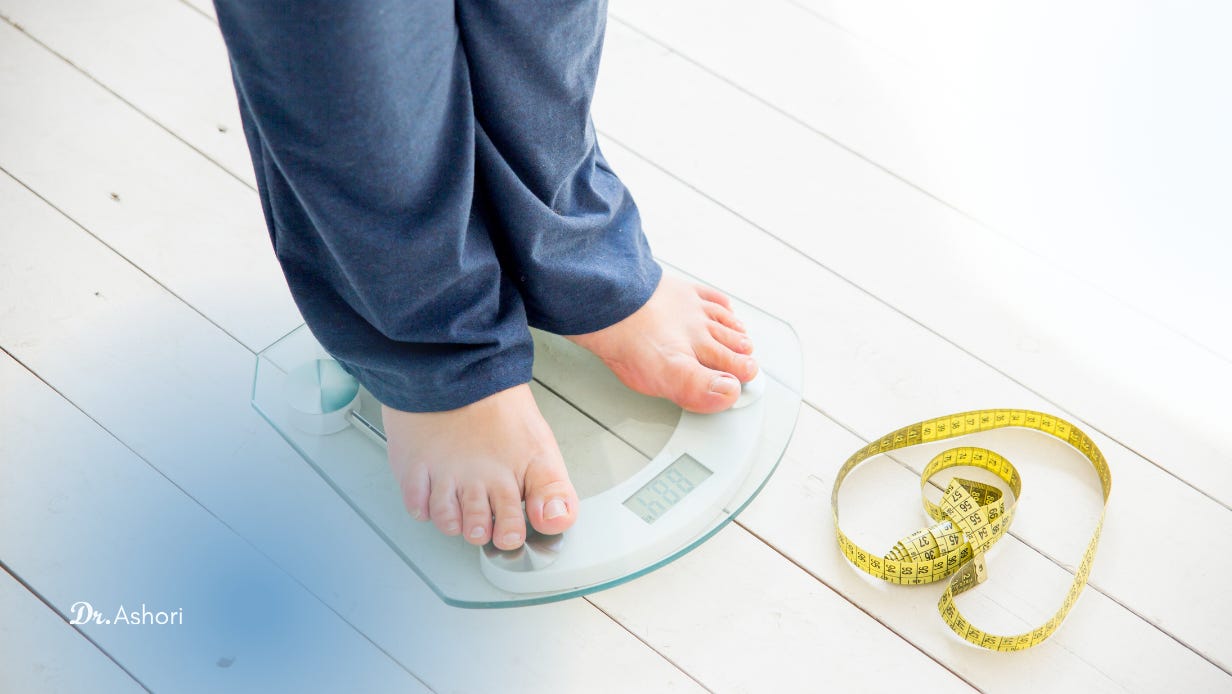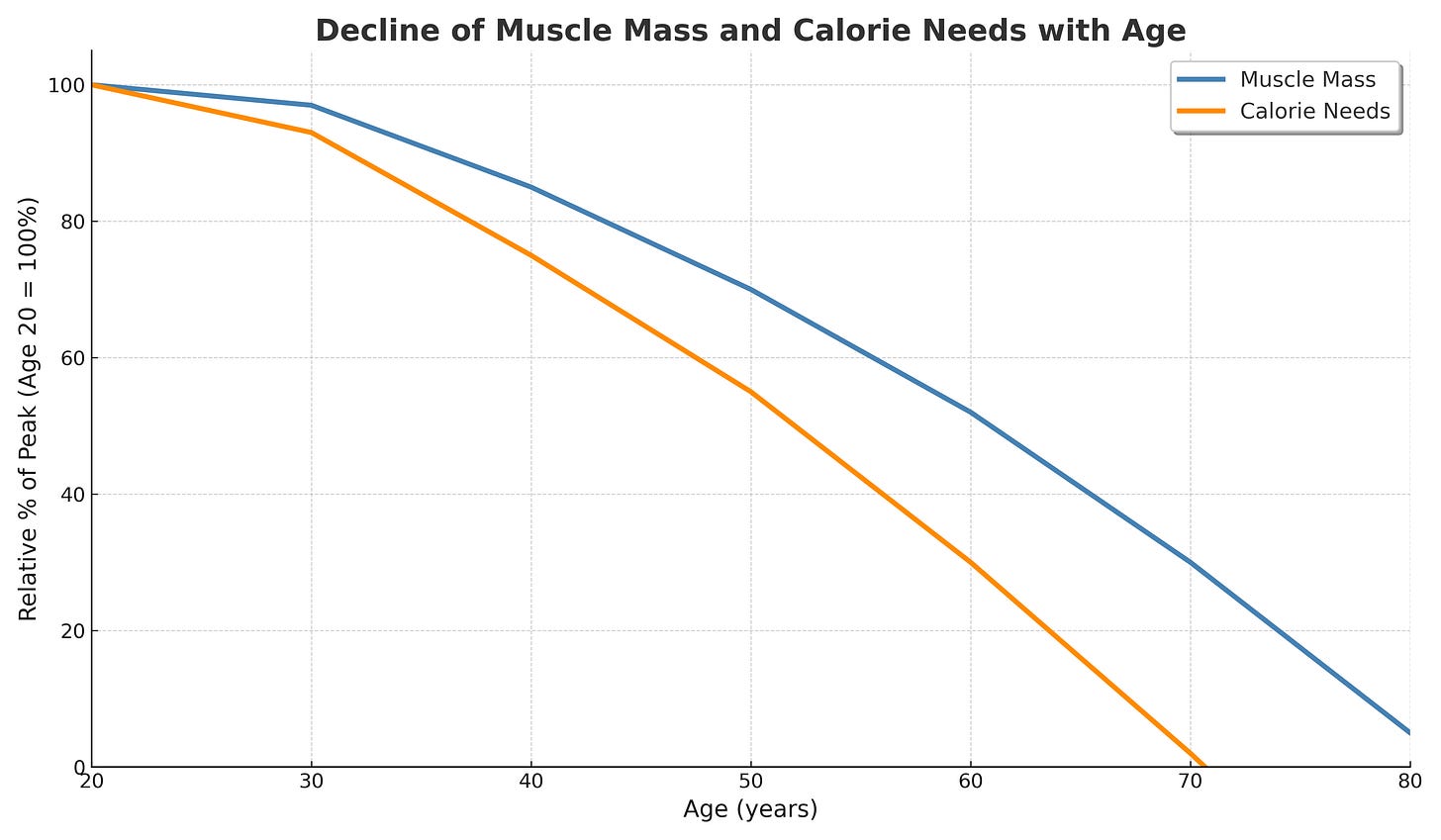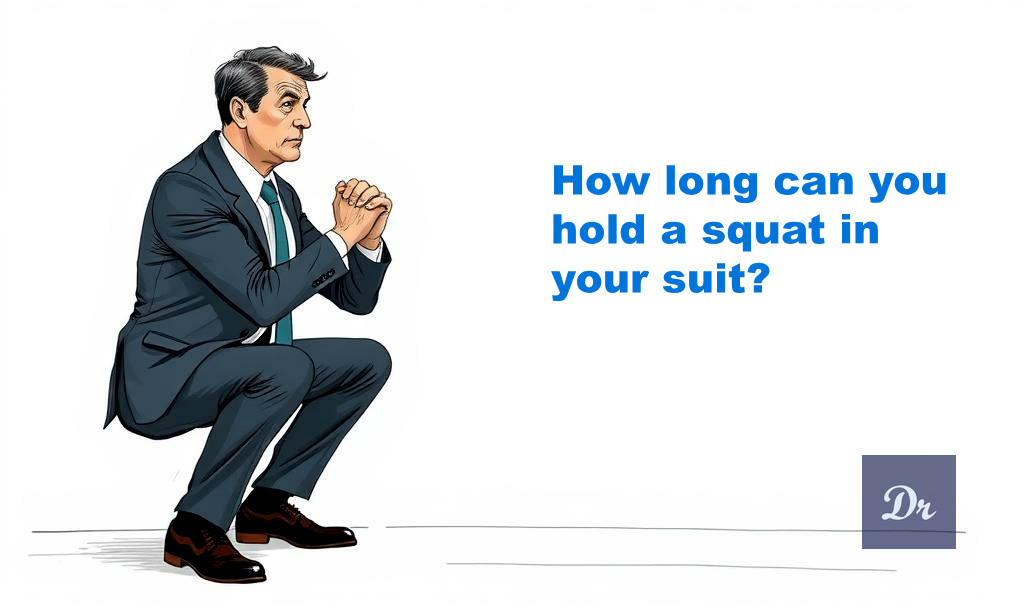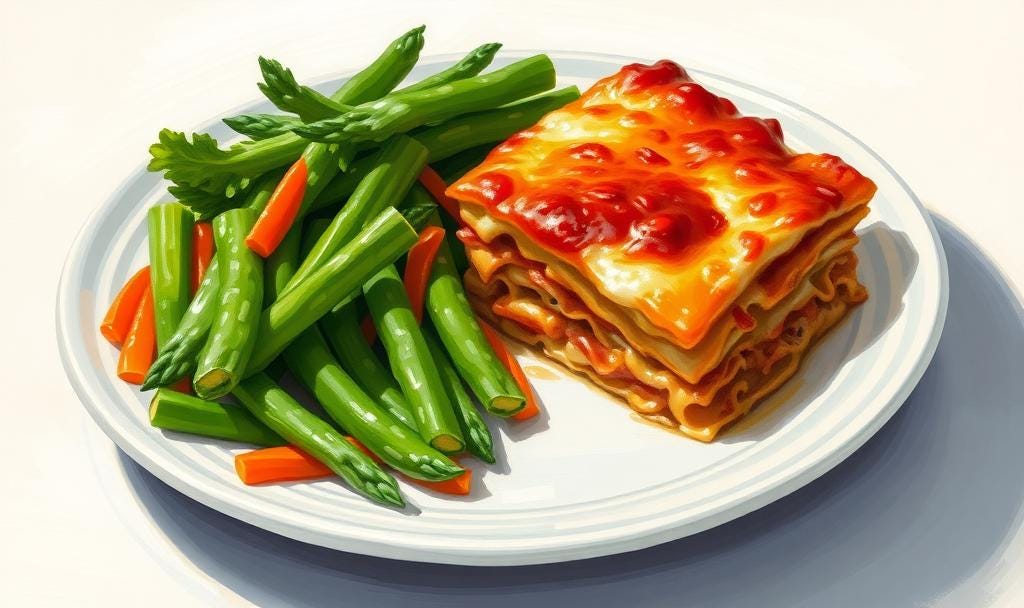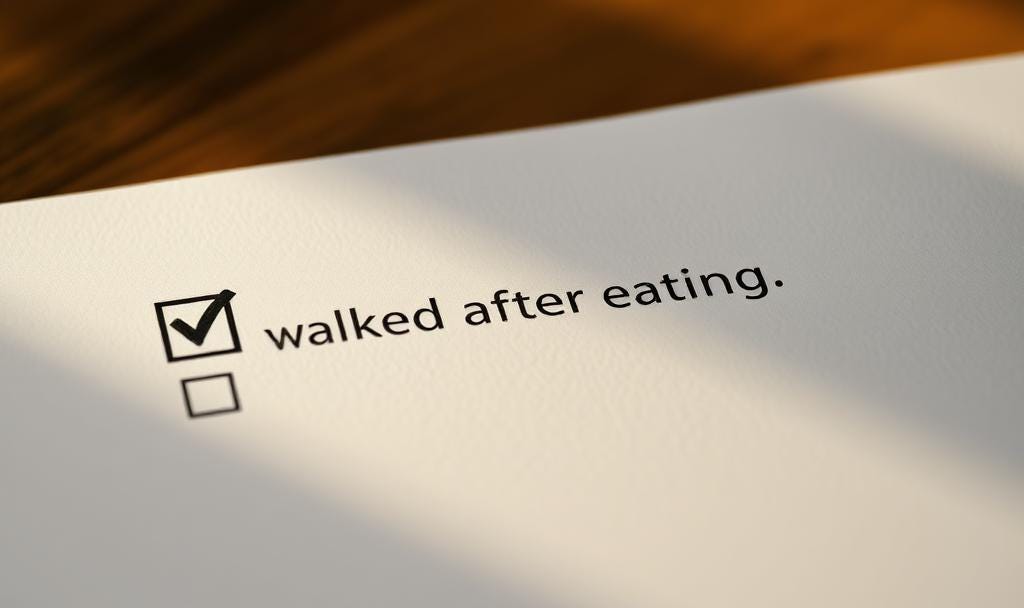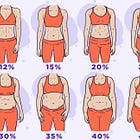The 5-Minute Fix for Post-Meal Weight Gain
Your biology changes slightly in your 40a. With a few minutes of post-meal movement, you can increase your metabolism and keep weight steady.
Eating like your 20s but slowly gaining weight? Your body changed. Muscle slips after 35, daily burn drops, and the same bowl of pasta spikes higher. The fix is not a diet overhaul. Instead, get the muscles activated after your meals. 5 minutes of movement protects your muscle, lowers post-meal glucose, and lets you keep the foods you enjoy.
Welcome to the Healthy Aging Newsletter, a free publication translating trustworthy medical research into simple habits to age well, free of chronic disease. I’m Dr. Ashori, a family medicine doctor turned health coach.
Why The Scale Changed
Whatever you put into your mouth eventually turns into glucose which floats around the blood until it’s absorbed. Some of it gets pushed into our muscle cells but not without them being activated. Exercise activates the transporters that remove the glucose and prevent them from turning into fat.
Less muscle → lower metabolism. Most adults lose muscle starting in their 30s. Less muscle burns fewer calories at rest.
Lower insulin sensitivity. The same bowl of pasta pushes blood sugar higher and keeps it high longer in your 30s vs your 20s.
Less daily movement. Work and life trim away the tiny motions that used to add up.
None of this means you did anything wrong. It means you need a new plan for this new decade.
The Fix: 5 Minutes Daily
You do not need a gym for this fix. After most of your meals, especially the high-carb ones, aim for a 5 minute light workout which could be as simple as a walk.
After any meal or once per day:
Squats or sit-to-stands
Band or wall pushups
Band rows
Hip hinge or glute bridge
5–10 minute walk
A few yoga poses
Do slow reps, breathe all the way. This isn’t meant to be a gym workout but a way to activate the muscle cells.
Time cost: 5–10 minutes.
Benefit: More muscle, better glucose control the same day, a higher daily burn over time.
N. is a 42-year-old busy medical director at her large clinic with lots of responsibilities. She isn’t ‘out of shape’ but it’s as if a switch went off inside of her. She’s active on weekends, eats nutritious meals, does household chores, but can’t keep the weight from coming on.
She didn’t have any signs of hormone changes yet so after ruling out any perimenopausal changes, we just added some movement after her heaviest meals which were always dinner. A 5-minute walk now has turned into 30 minutes with her kids joining her.
She went down a dress size but more importantly she feels she sleeps better at night, and has more energy during her workday.
Make The Same Meals Work For You
Keep your favorite meals, no big changes necessary. But play around with the nutrient content of your meals.
Add fiber: 2 fists of vegetables or beans on the plate with any meal to slow down excess calorie absorption and feed the gut bugs.
Get your protein: Eggs, Greek yogurt, tofu, tempeh, beans, salmon, chicken, lentils, and other lean proteins.
Swap starches: Get some brown rice, quinoa, and sweet potatoes from time to time, in place of the white rice and pasta.
Watch liquid calories: Hungry, thirsty, bored? Try flavored carbonated water, tea, or coffee instead of the shake, soda, or juice.
Move after eating: Don’t forget the movement after meals.
What to Track For 8 Weeks
Pick 1-2 of these and track them. Celebrate any way you like.
Movement time after meals: How often after eating did you move?
Fiber added to food: How often did your meals have more fiber than carbs?
Waist-to-height ratio: Aim under 0.5 over time. Measure weekly, if it’s motivating.
Daily steps: Start with 2-3K and go up. Step counters on your phone can be a motivator.
Stamina: How often do you feel winded or tired? Grade it on your journal from a scale of 1-5.
A Simple 7-day Start Plan
Pick one meal - say, lunch. Your goal is to be consistent, not perfect. Consistency turns into habits, especially if you celebrate your wins and reward yourself.
Day 1: After your meal, go for a gentle walk, even 2 minutes.
Day 2: Post-meal walk, extend it for another minute.
Day 3: Do your walk and try some calf raises. Feel the stretch.
Day 4: Try a longer walk or do some gentle halfway squats.
Day 5: Do some wall pushups or try a 30-minute walk
Day 6: Make sure you move, even 2 minutes (back to basics.)
Day 7: Try some exercise bands after your meal. Gentle.
Repeat. Add a little (barely perceptible) each week.
Common Questions
Do I need heavy weights? No. Body weight and bands are enough to start.
Is walking alone enough? Walking helps. Strength protects your muscles, which protects your metabolism. Choose steeper angles or stairs.
When will I notice a change? Many people feel steadier energy in 2–4 weeks. Waist and strength changes usually show by 8–12 weeks.
The Takeaway
Your body in your 40s is not broken. It is different. Keep your meals you enjoy, but give your muscles a daily reason to stick around. Small strength plus small plate shifts beat big overhauls.
Don’t treat post-meal activities as a punishment for eating heavy. When I lived in Barcelona, it was quite common to see people go for a walk after dinner - the streets were packed with leisurely walking adults and kids.
If you want a simple plan tailored to your schedule and current labs, book a quick call and we’ll map it out together:



